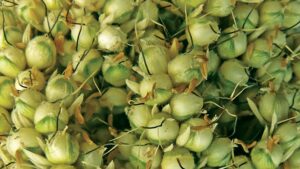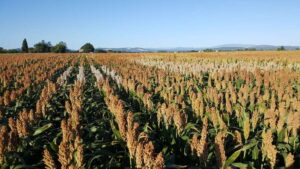What Does the Future Hold?
What Does the Future Hold? Industry insiders give Seed World a sneak peek at their CSS presentations
Corn, soybeans and sorghum as crops face new challenges in an increasingly high-tech, globalized world. Don’t miss your chance to hear influential industry insiders give their thoughts on these new challenges and how the industry can best facilitate them.
Thursday’s Joint Corn, Sorghum and Soybean General Session begins with General Session I: Future Global Outlook. Talking with Seed World, Sonny Ramaswamy says the projected global population of over nine billion within just the next few decades will require us to find ways to feed, clothe, and shelter everyone without wreaking havoc on the environment. This means major biological, environmental, behavioral and policy implications for agriculture and science.
Ramaswamy, administrator for the National Institute of Food and Agriculture, will speak Dec. 12 at 8 a.m. about this issue and how the industry can play a role. “My talk will focus on providing an overview of the approaches we need to develop and deploy to attain the goal of providing for food, feed, fuel, shelter, and health needs in a sustainable manner,” he says.
He’ll be followed by Junyi Gai, professor in plant genetics and plant breeding at Nanjing Agricultural University, whose presentation will focus on applied and basic research in China. “To maximize production in China, the best approach is to put crop production on advanced agricultural science and technology, or on research and innovation,” he says. He will discuss his agricultural research system and perspectives for future research and what that research means for the industry.
The Future of Seed Treatment
With competing pressures for productivity in agriculture and for protection of pollinators like bees and butterflies, the actions of the seed trade have a significant impact on the future. Can sustainability for both high-yield landscapes and ecologically nurturing habitat be achieved?
Laurie Davies Adams, executive director of the Pollinator Partnership, will address this question during her 10:15 a.m. presentation on how to build a sustainable future for agro-systems and ecosystems, which must include attention to pollinating species that perform a key ecosystem service in the reproduction of 70 percent of all flowering plants. “Smart decisions must rely on science, leadership and cooperation, putting the seed industry at the center of our future,” she recently told Seed World.
Global Drivers of Genetic Diversity
The afternoon will continue with the topic of genetic diversity, and what’s driving it in today’s world. “As competition for water resources increases in the 21st century, sorghum as a source of food and feed will likely increase too. It’s among the world’s most important cereals and a staple food crop for millions of people in the semi-arid tropics,” says Stephen Kresovich, professor and geneticist at South Carolina’s Clemson University.
He recently spoke to Seed World, and said advances in genomics are advancing the ability to discover new genes or genotypes of sorghum that are essential for crop improvement. These advances could be a boon to sorghum growers in both the U.S. and semi-arid tropics, he adds, bringing benefits to producers at the most local of levels.
GMOs and the Future
Alan McHughen, a plant biotechnologist who teaches at the University of California, recently gave Seed World the scoop on his presentation, which will be at 3 p.m.
“Although I encourage consumers to learn more about farming and agriculture, and how their food is produced, the overwhelming misinformation, especially via the internet, is unnecessarily escalating consumer anxiety about modern farming practices, with GMOs and pesticide usage bearing the brunt of consumer angst,” says McHughen. He will discuss public misconceptions about GM products and how to go about changing them for the benefit of both consumers and the seed industry.
Lessons in Corn Improvement
Jose Osorio Fortea, quantitative geneticist for AgReliant Genetics, also recently touched base with Seed World. His 3 p.m. talk will focus on the integration of genomic selection into double haploid-based corn breeding schemes. Genomic Selection (GS) is a quite recent marker-assisted selection approach that can be integrated into DH-based corn breeding schemes. GS allows selecting favorable individuals based on Genomic Estimated Breeding Values (GEBVs). A set of reference individuals both phenotyped and genotyped is used to estimate the effect of DNA markers on an agronomic trait of interest, such as grain yield.
“I will talk about basic concepts used in GS used within DH-based corn breeding schemes to foster genetic gain. From my presentation, you will have a better idea of how GS can be integrated into practical DH-based breeding programs,” says Fortea.
Numerous other presentations will round out the day’s speaker series, so don’t miss your chance to hear these industry experts offer insight into these and other important issues affecting you.












